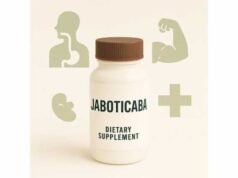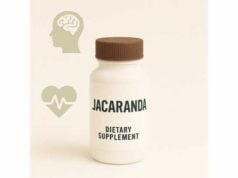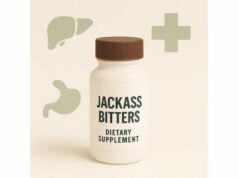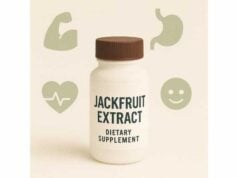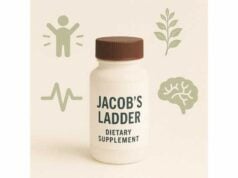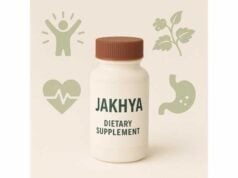
Jesuit’s bark—better known as cinchona bark—changed medicine. Harvested from Andean trees and carried to Europe by Jesuit missionaries in the 17th century, the powdered bark was the first effective tool against malarial fevers. Its defining constituents, a family of alkaloids led by quinine and quinidine, shaped infectious-disease care and even cardiology. Today, purified quinine remains a prescription antimalarial in specific situations, while tiny amounts flavor tonic water. But “natural” does not mean casual: cinchona alkaloids can trigger a cluster of adverse effects, from ringing in the ears and visual disturbances to dangerous immune thrombocytopenia and heart rhythm problems. This guide explains what Jesuit’s bark is, how it works, where it still fits in modern practice, why home dosing is risky, and how to think about culinary versus medicinal use. You will also find clear, conservative guidance on serving sizes, timing, interactions, and who should avoid it entirely.
Quick Summary
- Quinine and related alkaloids from cinchona bark reliably kill malaria parasites and shaped modern therapy.
- Tonic water contains very small amounts of quinine (≤83 mg per liter); a 355 ml can provides about 30 mg.
- Do not self-dose bark powders; medicinal doses belong under medical supervision only.
- Avoid in pregnancy, with heart rhythm disorders, with a history of quinine reactions, or when taking interacting drugs.
Table of Contents
- What is Jesuit’s bark and how does it work?
- Benefits and real-world uses today
- How to use it safely in practice
- Dosage forms, typical doses, and timing
- Side effects, interactions, and who should avoid
- What the modern evidence shows
What is Jesuit’s bark and how does it work?
Jesuit’s bark comes from several species of the genus Cinchona, native to the Andean regions of South America. The powdered bark, shipped to Europe in the 1600s as “Peruvian bark,” became known as Jesuit’s bark because missionaries popularized it in pharmacies and royal courts. The bark contains dozens of quinoline alkaloids; the most notable are:
- Quinine — the prototype antimalarial.
- Quinidine — a stereoisomer later used as a cardiac antiarrhythmic.
- Cinchonidine and cinchonine — related alkaloids with similar scaffolds and milder activity.
Mechanism of action (parasites). Quinine interferes with heme detoxification in Plasmodium parasites. As the parasite digests hemoglobin inside red blood cells, toxic free heme accumulates. Normally, Plasmodium neutralizes heme by crystallizing it into hemozoin. Quinine binds in the food vacuole and disrupts this process, allowing toxic heme and drug–heme complexes to damage membranes and kill the parasite. The effect spans asexual blood stages—key for symptomatic disease.
Mechanism of action (heart). Quinidine blocks cardiac sodium and potassium channels, prolonging the action potential and the QT interval. Quinine at antimalarial doses can also prolong QT, albeit less predictably. This explains both useful antiarrhythmic effects (historically) and safety concerns (proarrhythmia).
Pharmacokinetics in brief. Quinine is well absorbed orally, reaches peak plasma levels within a few hours, and is metabolized primarily by hepatic CYP3A4, with contributions from CYP2C19 and CYP2D6. It can inhibit P-glycoprotein and interact with many drugs. The therapeutic window is narrow and patient factors—age, liver or kidney impairment, concomitant medications, and even malaria itself—change exposure.
Culinary use. In beverages, quinine supplies a distinct, clean bitterness. U.S. regulations limit quinine in carbonated drinks (tonic water) to no more than 83 mg per liter and require the label to declare quinine. That is a culinary dose, not a therapeutic one.
Bottom line. Jesuit’s bark introduced a class of lifesaving alkaloids. The same chemistry that makes quinine effective also makes it risky outside controlled dosing. Culinary bitterness is fine; self-medicating with bark powders is not.
Benefits and real-world uses today
1) Reliable antimalarial activity when appropriately used. Although artemisinin-based combination therapies now dominate first-line treatment in many settings, quinine remains an important option. It is used in combination with doxycycline, tetracycline, or clindamycin for certain uncomplicated infections—especially where resistance patterns, drug availability, or patient-specific factors make alternatives unsuitable. For severe malaria, modern care prioritizes intravenous artesunate for initial management, with transition to an effective oral regimen once the patient can take medicines by mouth. Quinine retains a role as an alternative when preferred options cannot be used.
2) Historical antiarrhythmic context (caution). Quinidine, a sister alkaloid, was used to manage certain arrhythmias. This matters as context: the electrical effects explain why quinine and quinidine can prolong QT and interact with other QT-prolonging drugs. In practical terms, anyone with known rhythm disorders should avoid do-it-yourself cinchona products.
3) Clear “what not to use it for”: nocturnal leg cramps. In the past, quinine was prescribed off-label for nighttime leg cramps. That practice fell out of favor because serious adverse effects—including severe thrombocytopenia and bleeding—occurred in otherwise healthy adults. Regulators explicitly advise against using quinine for leg cramps; the risk outweighs any modest benefit. If you have recurrent cramps, talk with your clinician about safer strategies (hydration timing, stretching routines, magnesium or other options where appropriate).
4) Culinary bitterness and mixology. Tonic water’s bitterness comes from quinine at trace concentrations. A 355 ml can (12 fl oz) at the legal maximum contains about 30 mg of quinine—far below medicinal dosing. Most people can enjoy a tonic beverage without issue, but individuals with a history of quinine sensitivity should avoid it.
5) Educational value and historical significance. Jesuit’s bark is a case study in global pharmacology—how traditional knowledge, colonial trade, botany, and early clinical experimentation converged to produce the first targeted antimalarial. Understanding that story helps readers appreciate why dosing precision and safety systems exist today.
Set expectations. If you are not treating malaria under medical supervision, Jesuit’s bark offers no proven health benefit as a supplement. As a culinary flavor, it adds bitterness and history to a glass. As a medicine, it belongs squarely in clinician-guided care.
How to use it safely in practice
Do not self-dose raw bark for medical purposes. Powdered or chipped bark varies dramatically in alkaloid content by species, altitude, harvest, and storage. A teaspoon of bark from one batch could contain several times the quinine of a similar-looking batch. Home teas, tinctures, or capsules cannot deliver predictable dosing and can lead to both undertreatment (dangerous in malaria) and toxicity.
If malaria is suspected: medical evaluation immediately. Fever after travel to an endemic region is a medical emergency until malaria is ruled out. Modern management includes rapid diagnostic testing or thick/thin smears, species identification, assessment for severe features, and weight-based therapy. Self-treatment with cinchona products delays care and complicates diagnosis.
Culinary and beverage guidance.
- Tonic water: acceptable for most adults in typical servings if you do not have a quinine allergy, a history of quinine-related thrombocytopenia, or a contraindication (see safety).
- Homemade bitters: if you prepare cocktail bitters, avoid raw cinchona bark; many jurisdictions restrict its sale for home use, and dosing is unpredictable. Choose commercial bitters that comply with local regulations, or citrus- and spice-based alternatives.
When a clinician prescribes quinine.
- Combination therapy matters. For uncomplicated falciparum malaria, oral quinine is paired with a companion antibiotic (for example, doxycycline) to improve efficacy and reduce recrudescence.
- Adherence and timing. Dosing is typically three times daily for quinine and twice daily for doxycycline (or alternative), over a defined course. Nausea or tinnitus are common; do not stop without medical advice.
- Monitoring. You may need lab checks, blood pressure monitoring, and ECG review if you have risk factors for QT prolongation or are on interacting drugs.
Travelers and prevention. Quinine is not a recommended drug for malaria prophylaxis in modern guidelines. Travelers should use vaccines when applicable, insect bite prevention, and an approved prophylactic regimen chosen for the destination and personal risk.
Special populations. During pregnancy, therapy choices differ; pregnant individuals require urgent specialist input. In pediatrics, weight-based regimens apply, and preferred drugs may differ by age and species. In all cases, follow clinician advice rather than general articles.
Dosage forms, typical doses, and timing
Important note: The specifics below are educational and reflect common references. Do not use them for self-treatment. Always follow the exact plan your clinician provides.
Prescription quinine sulfate (oral). Capsules are commonly available in strengths equivalent to 324 mg quinine sulfate per capsule (salt weight), which corresponds to a lower amount of quinine base. For uncomplicated infections, dosing often targets approximately 8.3 mg/kg quinine base (about 10 mg/kg salt) three times daily for 3 days, paired with a companion antibiotic such as doxycycline 2.2 mg/kg twice daily for 7 days, or alternatives (tetracycline, clindamycin) depending on age, pregnancy status, and resistance patterns. Adult regimens are capped at standard tablet counts per dose.
Severe malaria. Initial treatment is intravenous artesunate at weight-based doses in urgent care settings, followed by a complete oral regimen when tolerated. Intravenous quinine is uncommon where artesunate is available.
Tonic water and culinary use. The U.S. legal limit for quinine in carbonated beverages is 83 mg per liter (83 parts per million). A 355 ml can at that limit provides roughly 30 mg of quinine. That is not a therapeutic dose. People with a history of quinine-induced thrombocytopenia, hemolysis, severe hypersensitivity, or significant arrhythmia should avoid tonic water.
Why “bark tea dosing” is a myth. Even if you knew the species, the alkaloid fraction in bark varies with geography and processing. Boiling time, particle size, and water chemistry change extraction. Two identical-looking cups can differ several-fold in quinine content. This is the core safety reason pharmacies shifted from crude bark to standardized salts over a century ago.
Timing with food. Quinine can irritate the stomach; taking doses with a light snack may help. Some medications and foods interact via CYP3A4 or transporters; your prescriber may advise separating doses from certain drugs or monitoring levels.
Dose adjustments. Clinicians may adjust for body weight, renal or hepatic impairment, co-medications, and tolerance. Never change the plan on your own; if side effects are troublesome, contact your care team to discuss dose spacing, antiemetics, or a switch to a better-tolerated regimen.
Self-care while on therapy. Hydrate, limit alcohol, avoid starting new supplements, and do not take other QT-prolonging agents unless your clinician approves. Report new ringing in the ears, vision changes, bruising, dark urine, or palpitations immediately.
Side effects, interactions, and who should avoid
Common, usually dose-related effects (the “cinchonism” cluster):
- Tinnitus and hearing changes — ringing or muffled hearing.
- Headache, dizziness, nausea, vomiting — frequent early in therapy.
- Blurred vision or color disturbances — possible at higher exposures.
- Hot flashes, sweating, mild rash — occasionally reported.
These symptoms often improve when the dose is lowered or as the body accommodates, but they signal that exposure is significant; do not ignore them.
Serious adverse effects (seek care urgently):
- Immune-mediated thrombocytopenia — easy bruising, nosebleeds, bleeding gums, petechiae, or dark urine. This reaction can lead to life-threatening hemorrhage and may be associated with hemolysis or thrombotic microangiopathy.
- Severe hypersensitivity — hives, swelling, wheeze, anaphylaxis.
- Hypoglycemia — especially in severe malaria or pregnancy; quinine can stimulate insulin release.
- QT prolongation and arrhythmias — palpitations, syncope; risk is higher with structural heart disease, congenital long QT, electrolyte abnormalities, or concomitant QT-prolonging drugs.
- Hepatic or renal injury — dark urine, jaundice, right-upper-quadrant pain, rising creatinine.
Drug and food interactions (examples, not a complete list):
- CYP3A4 inhibitors/inducers (for example, certain azoles, macrolides, rifamycins, some antiretrovirals) can change quinine levels.
- Other QT-prolonging agents (for example, some antiemetics, antipsychotics, macrolide antibiotics) increase arrhythmia risk.
- P-glycoprotein substrates (for example, digoxin): quinine can raise levels; monitoring may be necessary.
- Warfarin and antiplatelets: increased bleeding risk in the setting of quinine-induced thrombocytopenia; any new bleeding symptoms are an emergency.
- Tonic water can trigger reactions in sensitized individuals; avoid if you have prior quinine reactions.
Who should avoid Jesuit’s bark and quinine altogether (unless a specialist decides otherwise):
- History of quinine-induced thrombocytopenia, hemolysis, or hypersensitivity — reactions can recur with any quinine source, including tonic water.
- Known congenital long QT or significant arrhythmia — risk of torsades de pointes outweighs benefits in non-emergency settings.
- Pregnancy (non-severe malaria) — drug choices differ; specialist input is essential.
- G6PD deficiency — risk of hemolysis is higher with some antimalarials; clinicians tailor regimens accordingly.
- Severe hepatic or renal impairment — altered clearance requires individualized plans.
- Use for leg cramps — explicitly not recommended due to safety concerns.
Practical safety tips. Keep a written list of all medications and supplements. If prescribed quinine, ask your clinician to review the list for interactions and clarify what to stop temporarily. If you notice ringing in the ears, vision changes, unusual bruising, or palpitations, stop the next dose and call for advice.
What the modern evidence shows
Effectiveness against malaria. Quinine remains clinically effective against blood stages of Plasmodium species when used correctly and combined with a companion drug. Authoritative treatment tables list quinine-based regimens—by weight and age—as options for uncomplicated malaria in specific contexts, particularly when artemisinin combinations are unavailable or contraindicated. For severe malaria, modern guidance prioritizes intravenous artesunate as the initial lifesaving therapy, with oral step-down treatment to complete the course.
Risk–benefit balance for leg cramps. Controlled assessments and post-marketing reviews found that the modest reduction in leg cramp frequency did not justify the risk of serious adverse effects. Regulators warned clinicians and patients against using quinine for cramps and implemented risk management measures for prescription products to curb off-label use. That stance has not reversed.
Culinary regulations. Food safety regulations cap quinine in carbonated beverages at 83 parts per million and require clear label declaration. This limit preserves traditional bitterness while minimizing exposure risk for the general public, including those unaware of a quinine sensitivity.
Historical and scientific significance. Analyses of historical records underscore the Jesuits’ role in transmitting bark knowledge from Andean communities to Europe. Scientific reviews trace how quinine and quinidine informed both antimalarial pharmacology and the development of antiarrhythmic drugs. These threads explain why Jesuit’s bark sits at the intersection of infectious disease, cardiology, and global health history.
Evolving role. As resistance patterns and drug supplies shift, the place of quinine adapts. Artemisinin-based combinations dominate first-line therapy in many settings due to shorter courses and better tolerability, but quinine persists because it works, it is widely known to clinicians, and it can be life-saving when alternatives are off the table. For individuals, the takeaway is simple: use Jesuit’s bark–derived medicines only within a modern, evidence-based plan.
References
- Appendix A: Malaria in the United States: Treatment Tables 2024 (Guideline)
- Treatment of Uncomplicated Malaria 2024 (Guidance)
- FDA Drug Safety Communication: New risk management plan and patient Medication Guide for Qualaquin (quinine sulfate) 2010 (Safety Communication)
- 21 CFR 172.575 — Quinine 2019 (Regulation)
- What Historical Records Teach Us about the Discovery of Cinchona Bark by the Jesuits 2022 (Historical Review)
Disclaimer
This article is for education and general information. It is not a substitute for professional medical advice, diagnosis, or treatment. Do not use Jesuit’s bark or quinine to self-treat fever, malaria, or leg cramps. If you have fever after travel, seek urgent medical evaluation. If you are pregnant, have heart rhythm disorders, have ever reacted to quinine, or take prescription medications, consult your clinician before consuming products that contain quinine—including tonic water. If you experience tinnitus, vision changes, unusual bruising, dark urine, palpitations, or fainting after exposure to quinine, seek immediate medical care.
If this guide was helpful, please consider sharing it on Facebook, X (formerly Twitter), or another platform, and follow us for more evidence-informed health explainers. Your support helps us continue producing high-quality content.

